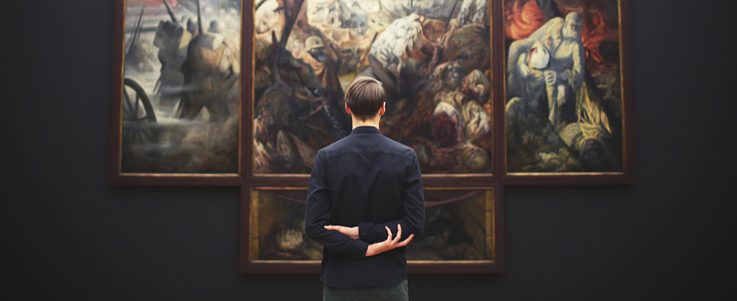In the course of the twentieth century, artistic dance developed into an independent genre in the Western world. But its shaping as so-called “expressive dance” or “free dance” is undoubtedly a specifically German contribution to modernism.
Initially rather esoteric and confined to a small circle of initiates, in the years between the two world wars expressive dance developed into an immensely popular artistic practice, accompanied by a broad amateur dance movement. Its high-point was marked by the contributions of several prominent artists such as Rudolf von Laban, Gret Palucca and Mary Wigman in the accompanying program of the 1936 Olympic Games in Berlin. Expressive dance was the only modernist art genre that was spared suppression under Nazi cultural policy. Nevertheless, many artists were hindered in their work because of political or racist persecution.
After 1945, the pre-war artistic achievements of expressive dance were largely forgotten and, as in its early years, expressive dance was passed on only in small circles. It was only with the establishment of dance theater in the 1970s, and after 2000 through targeted measures by the Federal Cultural Foundation, that this form of artistic dance has once again attracted widespread attention.
A Short Biography of Expressive Dance
1910: Founding of the Jaques-Dalcroze Institute of Education for Rhythmic Gymnastics in Hellerau
1913 to 1918: Summer school of the choreographer Rudolf von Laban at the artists' colony Monte Verità
1925/27: Foundation of the Dance Department at the Folkwang School in Essen under the direction of Rudolf von Laban and Kurt Jooss
1928: Foundation of the Folkwang Dance Theater Studio
1932: International choreographic competition in Paris; first prize goes to Kurt Jooss's work
Der Grüne Tisch (
The Green Table), last performance by Oskar Schlemmer's
Das Triadische Ballett (The Triadic Ballet)
1935/36: Preparations for a great choreographic initiatory performance entitled
Vom Tauwind und der neuen Freude (Of the Thawing Wind and the New Joy) in the accompanying program of the 1936 XI Olympics in Berlin. Taking part are approximately 10,000 amateur dancers from all parts of the German Reich who have received instruction in the educational empire of the Laban schools. Expressive dance remains the only modern art form that is not denounced as degenerate under Nazism.
1967: Along with Rudolf von Laban, the most influential dancer and choreographer of the expressive dance movement, Mary Wigman, ceases her teaching activities.
1972: Pina Bausch takes over management of the Dance Department in Wuppertal at the Municipal Theater and renames it "Tanztheater Wuppertal" (Wuppertal Dance Theater). In this way, she pays tribute to the dance culture of the twenties, but at the same time breaks with its gloomy aesthetic paradigm.
The legacy of expressive dance is widely rediscovered, researched, revitalized, reconstructed, documented and appreciated in the years following 2000, in particular as part of the initiative of the Federal Cultural Foundation Dance Plan Germany (2006 to 2011) and the support funding for “Dance Heritage” (2011 until 2017).
To the Overview
